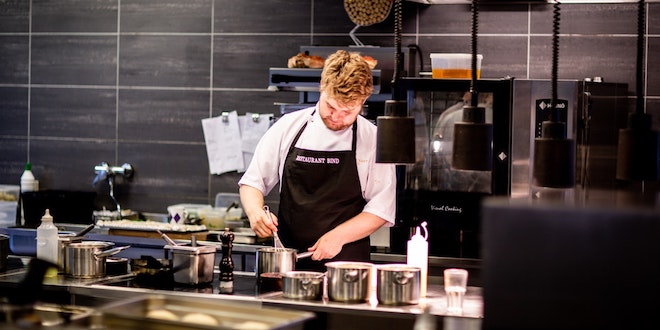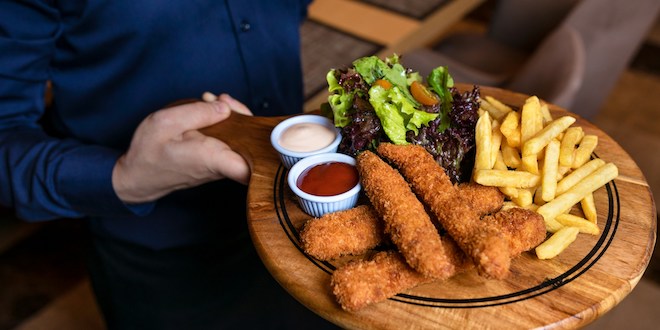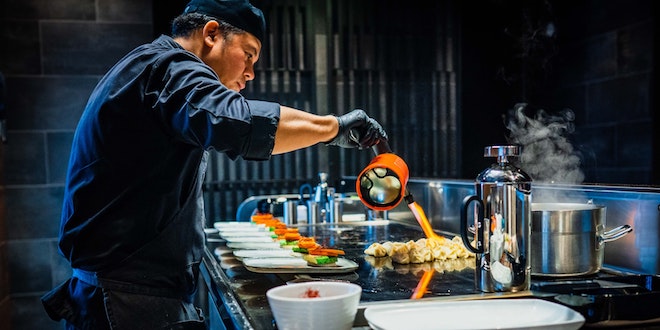Brand Identity Tips for Restaurant Owners
Last Updated on March 13, 2023
When most people think about a brand or brand identity, they may not immediately come up with the name of a restaurant. We’re more likely to define brands as stores, or companies, or product lines, rather than an eatery. But as all successful restaurant owners know, rejecting branding as something that happens to other people is definitely a mistake.
Everything in the public eye is branded these days. A brand is more than just a name to tell you who is providing a product or service, after all — when carefully crafted and created correctly, a brand actually helps to enhance or even alter the perception of the public. The brand identity is centered around a brand´s creative visuals that echo and reinforce its image and personality.
Nowadays, it is important to build a brand both offline and online. In this sense, the user experience is critical and understanding your customers needs and pain points should be the first step to develop a positive relationship with them. You can sneak a peek here to find out how to conduct an effective user experience research.
In terms of a restaurant brand identity, branding can be a make-or-break situation that directly influences whether your intended audience wants to eat at your restaurant — or not.
Let’s get into some of the nitty-gritty about brand identity, and why it’s just as important for restaurant owners as it is for any other type of company.
Create Visuals That Align With Your Brand
View this post on Instagram
Brand identity is chiefly defined by the visuals that you choose for your brand. This means that everything from your logo, to your menu, to the colors you choose for your seat covers all have an impact on that identity.
The logo and signage are often perceived as the primary parts of a brand identity, simply because they’re most in the public eye, and are most easily identified. Logos are especially the center of attention, as the most commonly seen aspect of restaurant visuals. A carefully designed logo for a fast-food restaurant, for example, can become the “face” of your restaurant, especially if you use a mascot — think of Chuck E. Cheese, for instance.
But there’s more to your visuals than that. Lots more. Actually, every visual aspect of your restaurant can either align with or confuse your brand.
So, for instance, you may run a small, home-style restaurant that focuses on local cuisine and a comfortable atmosphere. That’s your brand personality.
If you then use stainless steel tables, a stark color palette, and menus presented in heavy Gothic font, your brand visuals will likely be at odds with your brand personality.
Why is this important? Basically, because customers like to know what to expect, especially in a restaurant. If you promote a family-style restaurant and give off decidedly non-family-style vibes from the interior or the visuals, it significantly lessens the likelihood that a potential customer will invest time and money into seeing whether your restaurant is worth eating at.
Aligning your brand visuals with your brand is an important and fundamental part of making your brand identity work for you.
Brand Identity Appeals To Your Target Audience
View this post on Instagram
Carefully crafting your brand identity also helps to create a location that naturally appeals to your target audience.
Of course, this requires that you have a very good idea of who your target audience actually is.
It also requires market research to find out what, statistically, your target is drawn to. Designing your brand identity around your audience is like using exactly the right lure for flyfishing — you minimize the likelihood that you’ll alienate your potential customers, and maximize your chances of drawing them in.
This means that brand identity is an important part of the success of a restaurant, as it can either chase customers away, or invite them to give your location a try.
Brand Identity And Brand Personality = A Complete Brand
Of course, there’s more to a brand identity than just the look of things. A brand in itself is about how the public perceives and reacts to a company — and a restaurant’s brand identity and brand personality are part of that. It isn’t just about knowing that a Starbucks logo is a siren, or that they use green awnings. It’s about thinking of your favorite coffee drink when the company name is mentioned, or reflecting on how you feel when you’re there, or remembering a particular ad campaign, or a time you spent with a friend inside the cafe.
In short, your brand identity covers a lot more than just what we see.
Why is that important?
View this post on Instagram
Basically, because attracting and retaining customers hinges on creating an emotional response within them. People cultivate loyalty to brands that they identify with, that they see a definite benefit from. Successful restaurant owners know that it’s more than just the quality of the food — it’s about the experience of visiting the restaurant, about how the whole thing makes their customers feel.
Italian restaurant chain Olive Garden is a classic example of this, with their slogan that reads, “When you’re here, you’re family”. Family is one of the center points of their brand identity, just as much as pasta. It isn’t just about eating as many breadsticks as you can — it’s about fighting with your brother over the last one in the basket.
And that’s really why restaurant owners should care about their brand identity. Just as with any other company, organization, or product line, you’re not just selling what you make — you’re selling the feeling that goes with it. You’re selling the experience.
As the track record of successful restaurants has proven, again and again, that’s what people are truly willing to commit to.
Author Bio
Phil Eisenberg’s best skills include writing engaging articles, developing content strategies and planning digital marketing campaigns. He likes to play the guitar, and play with his dog while brainstorming ideas for his clients. He works at a local IT firm by day and freelance by night.







